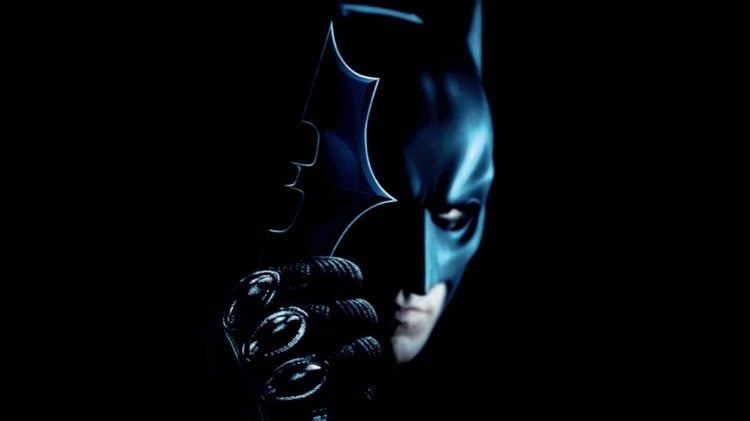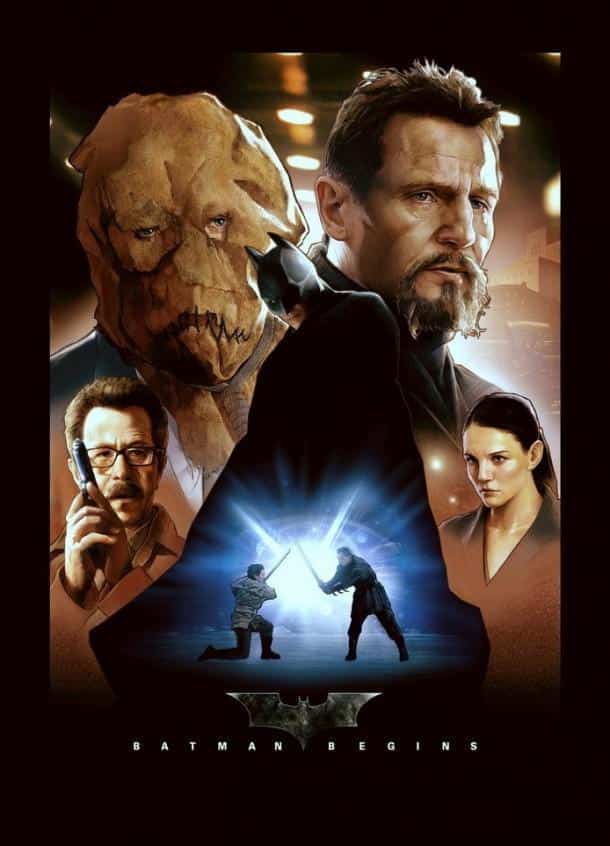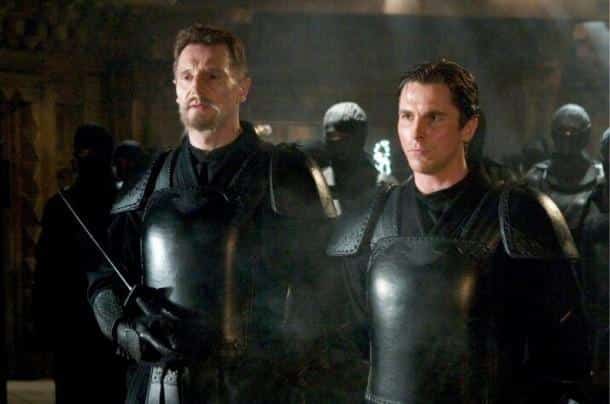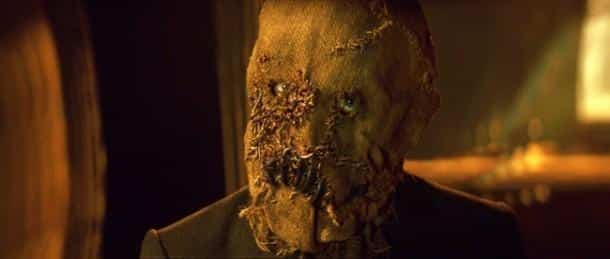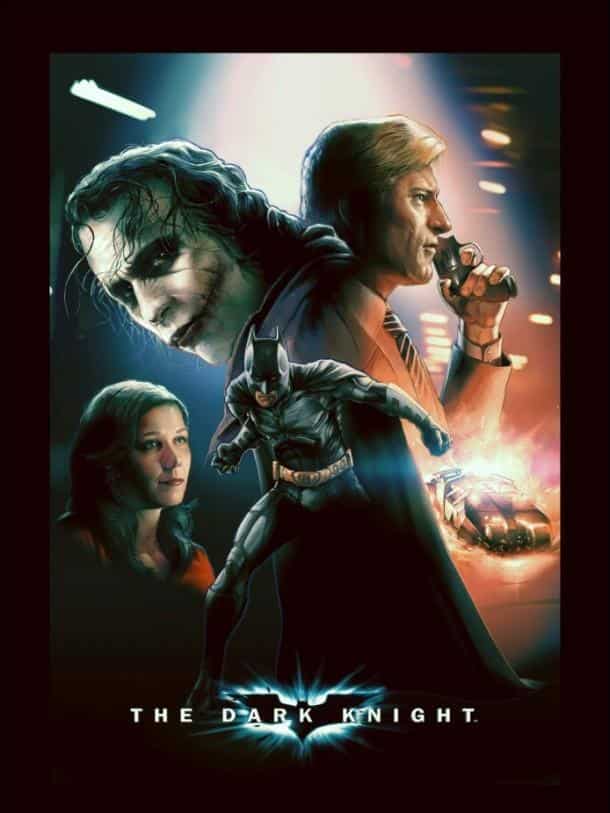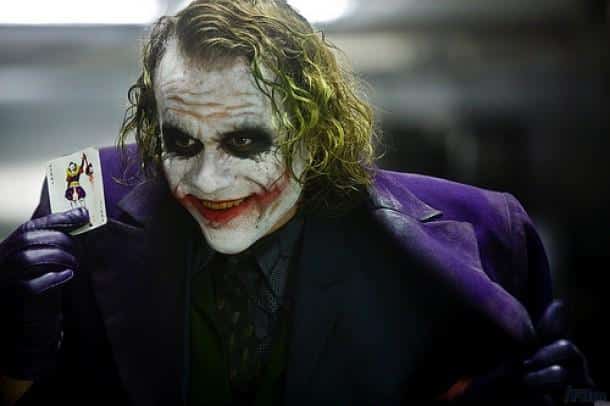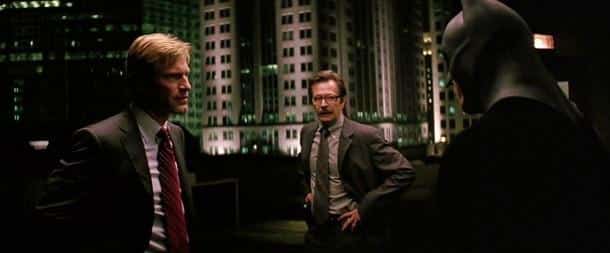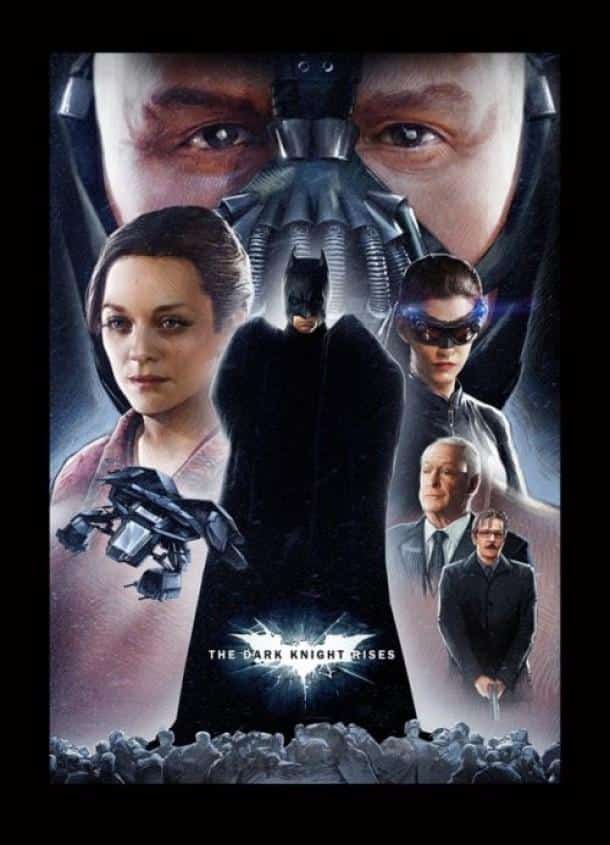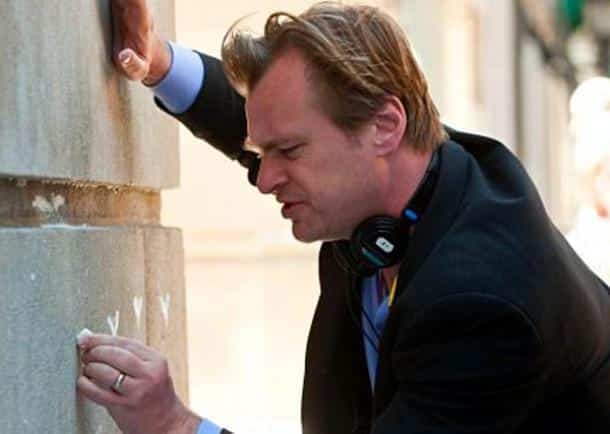Batman Begins set the standard, The Dark Knight raised the bar, and The Dark Knight Rises completed The Dark Knight Trilogy, a psychological, epic Christopher Nolan franchise. Looking back at the three films in The Dark Knight Trilogy, it’s hard to argue that they aren’t the best superhero movies to date. Nothing has come close.
In 1997, after three fairly successful films (two from Tim Burton), the Batman saga came to a complete halt due to the critically reviled Batman & Robin. The Joel Schumacher-directed film, which features George Clooney in a nipple bat suit, has a legacy among comic book fans as one of the worst movies ever. “I think we might have killed the franchise,” Clooney later confessed, vowing to never reprise the role. Although Warner Bros. had plans to produce another Schumacher Batman, either Batman: Year One or Batman Beyond, the suits eventually came to their senses and employed up-and-coming director Christopher Nolan (Memento, Insomnia) to reboot the series.
Batman Begins
In 2005, Batman Begins (the first film in the trilogy) was born, reintroducing audiences to a “more realistic” Batman / Bruce Wayne. With the first film, Christopher Nolan changed the game, adding deeper, more frightening and more thoughtful aspects to a genre that was considered to be nothing more than popcorn flicks. This wasn’t just another comic-book movie. Batman Begins, a radically new interpretation, instead offered profound themes on humanity, justice, revenge, honour, heroism, integrity and fear. Influenced by Frank Miller’s Dark Knight Returns comics, the action film challenged audiences and questioned public morale while reintroducing us to the origins of the Batman legend. This was a Gotham City the audience had never seen in a comic book movie before: gritty, bleak and unjust.
“They told me there was nothing out there, nothing to fear. But the night my parents were murdered I caught a glimpse of something. I’ve looked for it ever since. I went around the world, searched in all the shadows. And there is something out there in the darkness, something terrifying, something that will not stop until it gets revenge… Me.” – Bruce Wayne (Christian Bale)
Batman Begins (84% on Rotten Tomatoes) is the heartbreaking journey of Bruce Wayne and the rise of a vengeful vigilante named Batman. Writers Nolan and David S. Goyer crafted a script that based Batman in a very similar universe to our own. For the first time, we were allowed to witness the true effects of the tragedy that befell a young Bruce. Thus, Batman Begins became the template for comic book origin stories.
After his parents’ deaths (killed by Joe Chill), Bruce Wayne becomes completely lost in vengeance, forsaking his riches in search of a way to fight injustice. Along his travels, he meets Ra’s Al Ghul, leader of The League of Shadows, who helps the angry youth to channel his fears. Henri Ducard trains Bruce in ancient forms of combat, but before completing his training he learns of the League’s true intentions to destroy Gotham City.
After escaping, Bruce Wayne returns to Gotham to serve as its protector. He takes on the image of a Bat, believing that his very own phobia could be a symbol for justice – “My fears will become their fears.” With access to the Wayne Enterprises Applied Sciences Department (thanks to Lucius Fox, played by Morgan Freeman), Wayne Manor tunnels and the help of a police detective, James Gordon, Batman does the impossible: taking down Gotham City’s criminal underground.
“Over the ages, our weapons have grown more sophisticated. With Gotham, we tried a new one: Economics. But we underestimated certain of Gotham’s citizens… such as your parents. Gunned down by one of the very people they were trying to help. Create enough hunger and everyone becomes a criminal.” – Ra’s al Ghul (Liam Neeson)
Although Batman Begins opened to fairly favourable reviews, many critics were concerned about the influences the darker themes would have on children, the genre’s primary audience at the time. Christian Bale’s interpretation of Bruce Wayne and Batman gained a lot of favour among audiences, especially his playboy personality. Many still consider him the best Batman actor — both with the cowl and without it — even after the character has been rebooted and played by various other actors, including Ben Affleck and Robert Pattinson.
Batman Begins offered a number of unforgettable performances, including Gary Oldman as Commissioner James Gordon, Michael Caine as Alfred, Cillian Murphy as Scarecrow, Tom Wilkinson as Carmine Falcone and Liam Neeson as Ra’s al Ghul. The entire cast seemed perfect, except for a miscast Rachel Dawes (Bruce’s childhood friend), played by Katie Holmes. Special mention was made of Wally Pfister’s cinematography (winning an Oscar at the 78th Academy Awards), Hans Zimmer’s soundtrack and Christopher Nolan’s amazing directing.
Although Nolan had only planned on doing one Batman film, a sequel was imminent. After consecutive awards at various ceremonies, Warner Bros. saw the dollars and the chance to create a series of extraordinary movies with the same box office mojo. The importance of Batman Begins is pivotal, not only to Christopher Nolan’s The Dark Knight Trilogy but to comic book and superhero films in general. This is where it all started. The “different approach” worked, and it paid off big time.
Batman Begins Trivia:
- Keanu Reeves, Jake Gyllenhall, Henry Cavill (Superman) and Joshua Jackson were all considered for the role of Batman. It would have been a mighty awkward Dark Knight Rises with Jake as Bats, Maggie Gyllenhaal (his sister) as Rachel and Ledger as Joker.
- The Wachowski Brothers were approached to develop the Batman reboot but passed on the opportunity to focus on completing the Matrix Trilogy.
- Darren Aronofsky was also attached to direct the reboot. His vision included Batman as a homeless teenager in Hong Kong. Warner Bros. declined after he considered Clint Eastwood for the role of an elderly Batman.
- Jack Gleeson (King Joffrey) of Game of Thrones fame has a small role as the kid who talks to Batman in the alleyways. How innocent he once looked.
- The sword fight between Liam Neeson and Christian Bale was filmed on a real frozen lake in Iceland. Both Neeson and Bale feared that the ice would give in after hearing cracking during the scene. The following day the lake thawed and all the ice was gone.
- Batman uses a fighting technique called Keysi in the Dark Knight Trilogy. Keysi focuses on real-world street fighting methods that include headbutts and elbowing.
- Marilyn Manson, Christopher Eccleston and Ewan McGregor were originally considered for the role of Scarecrow. Ultimately Cillian Murphy played the character.
- Christian Bale was almost cast as Robin in Joel Schumacher’s Batman Forever.
The Dark Knight
Although audiences were paying attention, thanks to the success of Batman Begins, nothing could prepare us for the sensational Dark Knight (94% on Rotten Tomatoes). The sequel was bigger, darker, and better in every department. The Godfather of superhero movies, The Dark Knight raised the bar and set a new standard for comic book films.
“Look at me. So I had a wife. She was beautiful, like you. Who tells me I worry too much. Who tells me I ought to smile more. Who gambles and gets in deep with the sharks. One day, they carve her face. And we have no money for surgeries. She can’t take it. I just want to see her smile again. I just want her to know that I don’t care about the scars. So… I stick a razor in my mouth and do this… to myself. And you know what? She can’t stand the sight of me! She leaves. Now I see the funny side. Now I’m always smiling!” – The Joker (Heath Ledger)
The announcement of the sequel was met with some controversy, mostly due to the casting of Heath Ledger as the Joker. But as everyone knows, Ledger not only went on to prove his worth but also won an Academy Award for Best Supporting Actor in the role of Joker. Sadly, Heath never got to witness the popularity of his character and died before the release of the film or receiving his Oscar. Today his legacy continues as one of the best actors in a comic book film.
At the end of Batman Begins, Batman restores some order to Gotham City. But even though the city isn’t run by mobs and criminal organizations any longer, the justice department is still not in control of the city. Even though the police now have a fighting chance, Batman still has to step in to save the day. When Bruce Wayne grows tired of being Batman, he finds a young, hopeful lawyer (Gotham’s White Knight) who shares his ambitions for justice and peace in Gotham City.
On the verge of Gotham’s restoration, in steps, a psychopathic madman named The Joker promises the now desperate mob a fighting chance. Together with a team of goons, Joker wreaks havoc on the entire city – his only real goal is to destroy the hope of the city and spread anarchy. Batman soon realizes that The Joker is unlike any other villain he has come across. “Some men just want to watch the world burn,” Alfred suggests. When the Joker manages to turn Gotham City’s elect, Batman, with the help of Commissioner Jim Gordon and Lucius Fox, steps in to end The Joker’s madness once and fall.
Let me get this straight. You think that your client, one of the wealthiest, most powerful men in the world, is secretly a vigilante who spends his nights beating criminals to a pulp with his bare hands, and your plan is to *blackmail* this person? Good luck! – Lucius Fox (Morgan Freeman)
Written by Jonathan Nolan and Christopher Nolan, with a story credit for David S. Goyer, The Dark Knight is multilayered, with many subplots and new characters, but at its core lies the heart of the story and the struggle between good and evil. It’s a film that succeeded where Superman, Spider-Man, Fantastic Four, Hulk and the previous Batman films failed. With a budget of 185 million and a gross of over 1 billion dollars, it was easy to declare The Dark Knight a success.
Furthermore, critics and fans raved about its story, direction, Heath Ledger’s performance and the use of IMAX technology. Nolan not only pushed the boundaries of the story but also with groundbreaking technology, pioneering the use of IMAX cameras in a film. Hans Zimmer’s music also became an increasingly important part of the film, setting trends with his amazing score.
The Summer Blockbuster was so important to pop culture that even politicians attempted to use it for propaganda. Some even compared Batman’s fight against injustice to U.S. President George Bush’s war on terror. The Dark Knight was ranked the 15th greatest film in history on Empire’s 2008 list of the “500 Greatest Movies of All Time,” based on the weighted votes of 10,000 readers, 150 film directors, and 50 key film critics. Heath Ledger’s interpretation of the Joker, the Clown Prince of Crime, was also ranked number three on Empire’s 2008 list of the “100 Greatest Movie Characters of All Time.
The Dark Knight Trivia:
- Steve Carell, Adrien Brody, and Robin Williams expressed interest in playing The Joker. However, Christopher Nolan always had Heath Ledger in mind, even offering the role before the script was completed. When asked the reason for this unexpected casting, Nolan simply replied, “Because he’s fearless.”
- Before Aaron Eckhart won the role of Harvey Dent/Two-Face, Mark Ruffalo (The Hulk), Hugh Jackman (Wolverine) and Live Schreiber (Sabretooth) were considered.
- At the time of filming The Dark Knight, there were only four IMAX cameras in the world. One of them was destroyed during one of the chase sequences. The final IMAX print for the film was 9.5 miles long.
- Heather Ledger based his Joker character on a number of people, including Malcolm McDowell’s character in A Clockwork Orange and Sex Pistol’s bassist Syd Vicious. Ledger also kept a diary while in isolation before filming, thinking up horrific and perverse ideas that Joker would find funny. Amongst the list was Aids, blind babies, and landmines. Heath is also responsible for his own makeup design, using cosmetics he bought a local pharmacy.
- Batman notably has a different Bat-suit in the film. This was mainly created to allow Christian Bale more mobility, after his complaints about the original suit. The new suit allows him to move his neck and feels less claustrophobic.
- Heath Ledger shot and directed the Joker’s warning videos which feature the news reporter.
The Dark Knight Rises
Everything that has a beginning must have an ending. After seven years, Christopher Nolan announced that The Dark Knight Rises would be the final instalment in his Batman series, completing The Dark Knight Trilogy. While everyone was saddened by the news that Nolan wouldn’t return for a fourth, most people were more concerned about whether or not The Dark Knight Rises (87% on Rotten Tomatoes) would live up to the success of The Dark Knight. The Dark Knight Rises (the last movie in the Batman trilogy) brought with it a lot of mystery – very few plot details were leaked – leaving many fans playing guessing games about the final outcome. There was so much hype and anticipation regarding the finale that it seemed destined to be a failure. But if there is one thing that we’ve learned over the years, it’s that you can always rely on Mr Nolan.
“I never wanted you to come back to Gotham. I always knew that there was nothing for you here except pain and tragedy.” – Alfred (Michael Caine)
The Dark Knight Rises brings The Dark Knight Trilogy‘s Batman story full circle. Plots, locations and characters from Batman Begins and The Dark Knight return, along with a long list of new characters. While the film turned out to be full of twists and surprises, it wasn’t nearly as perfect as The Dark Knight. Christopher Nolan got a little sloppy with some of the editing and a storyline that includes huge plot holes. Although it wasn’t nearly a terrible movie at all, it did and didn’t quite live up to all the hype.
With each film, Nolan pushed his operatic Batman even deeper into the dark, exploring issues of fear, death, loss and suffering. The Dark Knight Rises was no exception and is ultimately the best example of the themes at work in The Dark Knight Trilogy. Nolan, who rewrote the rule book with the dark and gritty first instalment of Batman Begins, cranked it up a notch, exploring the world of terrorism. There are frightening themes at work in the film, as the two-minded “heroes” versus the multilayered “villains”. The cringing fear is echoed even louder through Zimmer’s powerful doom-drumming soundtrack.
“There’s a storm coming.” – Selina Kyle (Catwoman)
In the third act of The Dark Knight Trilogy, we find ourselves 8 years ahead of the events in The Dark Knight. The people of Gotham only remember Batman as a vigilante who murdered the city’s hero, Harvey Dent. Incidentally, the death of D.A. Harvey Dent brought about new legislation that puts a thousand criminals behind bars. Although this legislation helps keep the city safe, it’s also based on a lie, one that haunts a disheartened Commissioner Gordon.
Meanwhile, Bruce Wayne / Batman is a shadow of his former self, walking around with a cane, still beaten up from the events of the previous film and the death of Rachel. Although Michael Caine’s Alfred, Bruce’s voice of reason, tries his best to get him out of his isolation, Bruce longs for a day he gets to don the cape again. When a burglar breaks into his safe, he is awakened from his depressed state. Unknowingly, his investigation leads him to a new villain, Bane, the new leader of the League of Shadows. The emergence of Bane brings about chaos and disorder.
What follows is an epic battle of good versus evil. And for the first time ever, Batman might be on the losing end of the spectrum. “For me, the reason we chose Bane from all of the different antagonists you might set up against Batman, it was all about the physicality. We’ve never seen Christian Bale’s Batman go up against an antagonist who can go toe-to-toe with him, and you don’t know who’s going to win, physically,” Chris Nolan said.
“We were in this together, and then you were gone. And now there’s evil rising. The Batman must come back.” – Commissioner Gordon (Gary Oldman)
There was little doubt that The Dark Knight Rises would be one of the most talked-about films of summer (our winter) 2012. And from the very early screenings, the film received praise from critics and zealous fans. After millions of views from audiences worldwide and a box office opening week of 160 million dollars, the general consensus was that it was a great film – although not nearly as good as the previous film. There were also a number of things that didn’t work in The Dark Knight Rises. If you start nitpicking, you will soon realize that there are a few major flaws.
Although I personally loved Bane’s character (played by Tom Hardy), including his inaudible voice (which sounds muted behind the mask), there are many fans who felt disappointed by the masked terrorist’s final moments on-screen. It’s hard to believe a character so villainous and ruthless would take orders from Miranda Tate (Talia al Ghul, played by Marion Cotillard). Even more disappointing is the final fight between the Caped Crusader and Bane – both highly trained fighters. The fight falls flat when Batman gets the upper hand by breaking part of Bane’s mask. In reality, this should have been a longer, much more difficult fight between the two. Instead, the fight seems anti-climatic.
“It doesn’t matter who we are… what matters is our plan. No one cared who I was until I put on the mask.” – Bane
The poor editing in Dark Knight Rises has fans believing that there are a number of scenes that were cut from the story. Vulture recently discovered an interview with The Dark Knight Rises costume director Lindy Hemming in GQ, and during the interview, she incidentally described a scene that didn’t actually make it into the final cut of the movie (she hadn’t had the chance to see it before the interview. Below is her description of the deleted scene:
“The thing that you should have seen during that sequence is [Bane] being injured in his youth. So one of the fundamental things about his costume is that he has this scar from the back injury. Even if he hasn’t got the bulletproof vest on, he still has to wear the waist belt and the braces. In that scene in the prison, where he’s learning to fight the same way Batman learned to fight, he’s wearing an early version of his waist belt. It’s showing support, but it’s not the finished one he eventually wears. He’s also wearing an early version of his gas mask, all glued together … If you look at the film, unless they’ve cut it—and I’m sure they haven’t—there’s a whole early section for Tom Hardy where he’s fighting and being taunted by people. He’s got chains on him, and he’s standing on a wooden thing while people are attacking him. And in that scene, he’s wearing a much more ragged, primitive version of the mask.”
Many fans believed that the DVD or Blu-Ray release would allow us to finally see Christopher Nolan’s trilogy in its unedited completion – unfortunately, that never happened. But there are a number of other issues that even an extended version couldn’t fix. This includes the increasing number of one-liners, the cheesy explanations by Alfred regarding Bane’s origins, the ludicrous idea that Blake figures out Batman’s true identity, and the completely dumb justice system (the police, the SWAT teams, the military and the government). Did anybody think of shooting Bane in the unprotected parts of his head? No?
The ending of The Dark Knight Rises involving Batman and the nuclear bomb also divided some fans. Many believed it was a poor ending to Christopher Nolan’s Dark Knight Trilogy, especially since the films were meant to be more realistic and grounded.
Of course, none of these annoyances stops The Dark Knight Rises from being an entertaining Batman movie. As someone so rightly quoted, “It’s not the ending we needed, but the one we deserved.”
“If you make yourself more than just a man, if you devote yourself to an ideal… you become something else entirely. A legend, Mr. Wayne, a legend!” – Ra’s al Ghul (Liam Neeson)
Nolan upped the use of IMAX technology; nearly half of The Dark Knight Rises was shot on IMAX large-format cameras, utilising ultra-resolution. Nolan states, “We got great results with the IMAX cameras on the last film. I appreciate what it offers from the technical side, but I’m most interested in what it can give me as a storytelling tool. How can it help me pull the audience deeper into this world? IMAX provides the broadest possible canvas, creating the most immersive experience.”
There are a number of things about The Dark Knight Rises that deserve praise. Tom Hardy’s physical performance as Bane was remarkably brilliant. Thinking back, his use of simple gestures to instil fear was amazing. In fact, there are a number of praiseworthy performances in The Dark Knight Rises. Anne Hathaway delivered a Selina Kyle/Catwoman that fans can be proud of, and Gary Oldman did wonders with a darker, more depressed Commissioner Gordon. Christian Bale and Joseph Gordon-Levitt (who plays a young police officer) also deliver strong performances as the story’s leads. Yet, the most powerful performance in The Dark Knight Rises belongs to the lowly butler played by Michael Caine. He delivers some of the most emotional punches through the film – even provoking the most avid fans to tears.
If anyone gets applause for The Dark Knight Rises, it will undoubtedly be Michael Caine, who does his best as Alfred Pennyworth in the trilogy.
There won’t be any more Christopher Nolan Batman movies (even though the director would continue to produce Zack Snyder’s Man of Steel, Batman v Superman and Justice League). The Dark Knight Trilogy is complete.
“What drew me to Batman in the first place was Bruce Wayne’s story,” said Nolan, “and that he’s a real character whose story begins in childhood. He’s not a fully formed character like James Bond, so what we’re doing is we’re following the journey of this guy from a child who goes through this horrible experience to becoming this extraordinary character. That, for me, became a three-part story. And obviously, the third part becomes the ending of the guy’s story.”
Unlike the comic books, these things don’t go on forever in film,” says Mr N. “And viewing it as a story with an end is useful.” And so it all ends. History will remember The Dark Knight Trilogy and its Batman for an eternity. Thank you, Mr Nolan, for changing the face of comic book film forever!
The Dark Knight Rises Trivia:
- Aaron Eckhart refused to accept the death of his character Harvey Dent but director Christopher Nolan had other ideas. Eckhart asked to return as Dent/Two-Faced but was, unfortunately, not resurrected. His death is a crucial plot development for part three.
- Ryan Gosling, Mark Ruffalo, and Nolan’s Inception star, Leonardo Di Caprio were all considered for the role of the courageous cop, John Blake.
- The strange chanting you hear on the soundtrack is actually the massed voices of Batman fans: the film’s composer ‘crowdsourced’ the sound, putting a shout-out on Twitter for fans to add their voices. He wanted to get hundreds of thousands of voices on there. So maybe you’re in the movie!
- Of the three writers, Christopher Nolan, Jonathan Nolan and David Goyer only Jonathan thought Catwoman (Anne Hathaway) would work. The other two thought she would be too campy. But Jonathan felt Batman’s character arc wouldn’t be complete without her.
- The football stadium scene in Gotham City had twelve thousand extras. Most movies these days use CGI to fill in the crowd, but Nolan prefers to use real people. Unfortunately for the shoot, it’s not uncommon for half the extras to leave before filming is complete. Plus, the extras had to bundle up in scarves and heavy coats in the hundred-plus-degree heat of a Pittsburgh summer to make people believe the scene’s chilly late fall setting. To keep the crowd engaged between the long, boring hot times between filming they raffled off prizes like iPads and a car. They also had the Batmobile-like “Tumblers” show up even though they weren’t needed for the scenes.
Tell us, do you think The Dark Knight Trilogy are the best superhero films of all time? Also, read about why Robert Downey Jr. said he didn’t really care for The Dark Knight.


